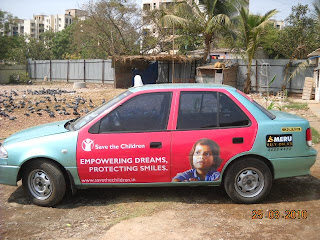Almost all large non-profits in india now have some form of telecalling fundraising - either through their in-house channels (much tougher to do) or through agencies (much more expensive).
Btw some call this telecalling business 'telefacing' and claim all sorts of proprietorial rights over the idea. A bit like some US firms claiming patent rights over Basmati really. Telecalling with a collections guy closing the loop has been in practise with a high degree of success since 2002 in the non-profit sector and banks in India have been at it even before MTNL/DOT stopped issuing those big black phones!
Now that I'm done with the rant, coming back to telecalling.
Most NGOs adopt a fairly simple approach and use telecalling for acquiring new donors. Lists are sourced and a shotgun approach is used. Incredibly, there is a reasonably high degree of success. This method has become increasingly attractive for lazy fundraisers as there is very little science in the approach.
More sophisticated approaches involve a testing of lists which are then allocated to telecallers (depending on ability). Screening can be done along the lines of gender (may sound sexist but donor databases are overwhelmingly male in most organisations I've familiar with), age and incomes using mostly proxy indicators like ownership of a 4 wheeler, house etc.
Inhouse v/s outsourced agencies
Inhouse has the benefit of being able to control processes better thereby ensuring a better engagement with prospects and in all probability a better donor profile. Meaning a better chance of retaining donors. Inhouse teams are tougher to put together and in most cases break-even points are a good 3-6 months from start.
Its very difficult to scale up rapidly as these tend to require a significantly high level of training and management time. We've managed to setup inhouse teams in 3 cities as against the 12 cities with outsourced calling.
This model also requires availability of funds for investments and sometimes that can make this a non-starter.
But taken across the Life Time of a donor, the payoffs from running inhouse much higher. They also provide a great deal of flexibility - esp when one looks at retention of donors or rapid deployment of resources in times of disasters and emergencies.
Outsourced :
Easier to put togther and if you have a tough sales manager in the team, its now possible to negotiate exceedingly favourable rates (I so wish I could tell you what we paying!). The quality of representation in sometimes suspect but that can be managed by regular trainings. We carry out almost one training per week on an average and yet find inhouse teams doing a better job. If you have national ambitions for your non-profit, its possible to ramp up rapidly. In less than 12 months we were able to establish a presence in 12 major Indian cities.
One lesson learnt here is that telecalling teams must almost always have a team manager to succeed.
I think the best approach for large organisations is to go with both models but I think there is a needs to be a willingness to take a very hands on approach even with outsourced agencies. Trainings, visits to program areas as well incentives go a long way in improving the quality of representation.
For smaller NGOs, inhouse teams may offer a better solution, especially if one does not plan to have a multi-city fundraising presence.
Moving on to using telecalling agencies for retaining donors - Depending on the available skills in the organisation its possible to do some high quality targetting using telecalling. For e.g using birth dates, last donation date and amount can make for some pleasant surprises for your donors. Or a slightly more advanced approach of identifying 'ideal' donors in your database and targeting them using telecalling can ensure a maximisation of resources.
I'm not sure how much its practised here, but its fairly common place outside India to use telecalling to support mailers and often nowadays a three pronged approach of hard copy mailers, e-mailers and telecalling has been also practised.
One thing I'm still trying to figure out is why telecalling has worked out cheaper than face-to-face. It's not the case for a few agencies (that run inhouse FTF teams) but by and large thats what's happening. Logically, telecalling has the added requirement of space and technology costs and therefore should be more expensive!
.jpg)
